
Paul Dans points to a massive book prominently displayed on a table in his Capitol Hill office — written, Dans says, “in the sweaty summer of 1980.” Yellowing and torn at the edges, it is a 1,091-page manifesto of conservative governance titled A Mandate for Leadership. “That book really became the bible of the Reagan Revolution. That’s kind of what we’re working from,” says Dans, a tall, MIT-educated lawyer who is leading a team of former Trump officials preparing a new “America First” agenda for the next Republican president — whether it’s former President Donald Trump or not.
In truth, the program laid out by Dans and his fellow Trumpers, called Project 2025, is far more ambitious than anything Ronald Reagan dreamed up. Dans, from his seat inside the Heritage Foundation, and scores of conservative groups aligned with his program are seeking to roll back nothing less than 100 years of what they see as liberal encroachment on Washington. They want to overturn what began as Woodrow Wilson’s creation of a federal administrative elite and later grew into a vast, unaccountable and mostly liberal bureaucracy (as conservatives view it) under Franklin Roosevelt’s New Deal and Lyndon Johnson’s Great Society, numbering about two and a quarter million federal workers today. They aim to defund the Department of Justice, dismantle the FBI, break up the Department of Homeland Security and eliminate the Departments of Education and Commerce, to name just a few of their larger targets. They want to give the president complete power over quasi-independent agencies such as the Federal Communications Commission, which makes and enforces rules for television and internet companies that have been the bane of Trump’s political existence in the last few years.
And they want to ensure that what remains of this slashed-down bureaucracy is reliably MAGA conservative — not just for the next president but for a long time to come — and that the White House maintains total control of it. In an effort to implement this agenda — which relies on another Reagan-era idea, the controversial “unitary theory” of the Constitution under which Article II gives the president complete power over the federal bureaucracy — Dans has formed a committee to recruit what he calls “conservative warriors” through bar associations and state attorneys general offices and install them in general counsel offices throughout the federal bureaucracy.
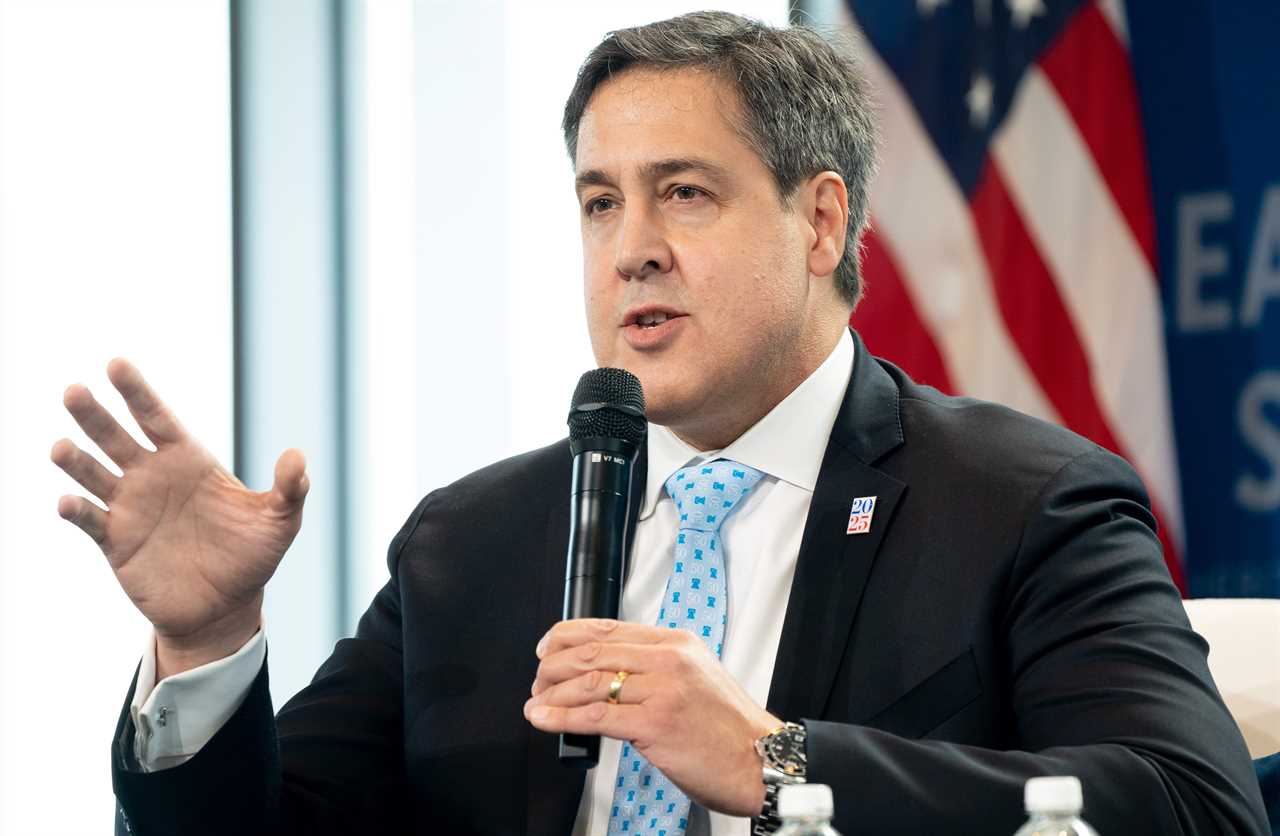
The Project 2025 team is scouring records and social media accounts to rule out heretics — effectively administering loyalty tests — and launching a so-called Presidential Administration Academy that tutors future MAGA bureaucrats with video classes in “Conservative Governance 101.” Dans says 17 lectures have been prepared (with titles such as “Oversight and Investigations” and The Federal Budget Process”), with another 13 in production, and nearly a thousand potential new bureaucrats recruited from around the country are already in training. These efforts are intended to ensure that the chaos and high-level defections of Trump’s first term never happen again, along with prosecutions like the ones the ex-president now faces.
The broad outlines of this agenda — which build on efforts begun toward the end of Trump's first term — have been known for some time. But it is only recently that many of the details have emerged, as well as how far-reaching these aims are. It has also become clear that, even more today than in 2016, Trump’s personal agenda has become the party’s agenda, despite all the Republicans who have defected from him. And that the new GOP establishment is using his populist insurgency to resurrect — in fact, entirely reconceive — its old Reaganite assault on the federal government. In its current formulation, this has less to do with sheer size — as Nikki Haley bravely pointed out at the Aug. 23 debate, Trump himself “added $8 trillion to our debt” — than on restoring “accountability” to government.
“It’s not just about 2025. It’s about ’29 and ’33 and ’37,” adds Brooke Rollins, Trump’s former domestic policy chief, who is now CEO of the Trump-endorsed America First Policy Institute. Rollins, like Dans and others involved in Project 2025, believes the training program amounts to a new front in the conservative movement. In the past, she says, “the business of governing and process was not our strong suit.”
That’s going to change, says her associate Doug Hoelscher, former director of Trump’s White House Office of Intergovernmental Affairs, who recently took over the America First Transition Project at AFPI. “Biden put about 1,200 people in the field on Day One. President Trump put in about 500,” Hoelscher says. “That shows how unready the right has been historically to govern.”
While they have a willing vehicle in Trump — not to mention the support of most of his primary opponents — many conservatives recognize they will have to compensate for Trump’s built-in liabilities. If they truly want to dismantle the “deep state” they believe they have to create, almost from scratch, a workforce that won’t sacrifice competence to Trump’s obsession with loyalty above everything else.
“This is a coming-together of the movement that has never been seen before,” says Dans, who keeps on his desk a replica of Reagan’s burgundy leather plaque inscribed in gold lettering, “It CAN Be Done.” Dans gained prominence in the latter stages of the Trump term when he joined John McEntee, the former body man for Trump who rose to head of the Presidential Personnel Office at age 29. They ousted alleged disloyalists such Dale Cabaniss, who ran the Office of Personnel Management, which manages benefits and retirement issues for the federal government’s civil service. Now McEntee is on board at Project 2025 and what he started in 2020 is the GOP template for the future. Together, with James Sherk (another CPI employee) they are seeking to resurrect “Schedule F,” an executive order Trump adopted in the last weeks of his administration — and Biden later rescinded — to expand the federal workers he could fire from the usual 4,000 or so political appointees to 20,000 or more who occupy key policy-making positions.
The exact number being targeted is still being decided, says Russell Vought, Trump’s former director of the Office of Management and Budget, who has been tasked with implementing the Project 2025 policy program. But ultimately the goal is to remove what Dans calls the “tenured class of political high priests.”
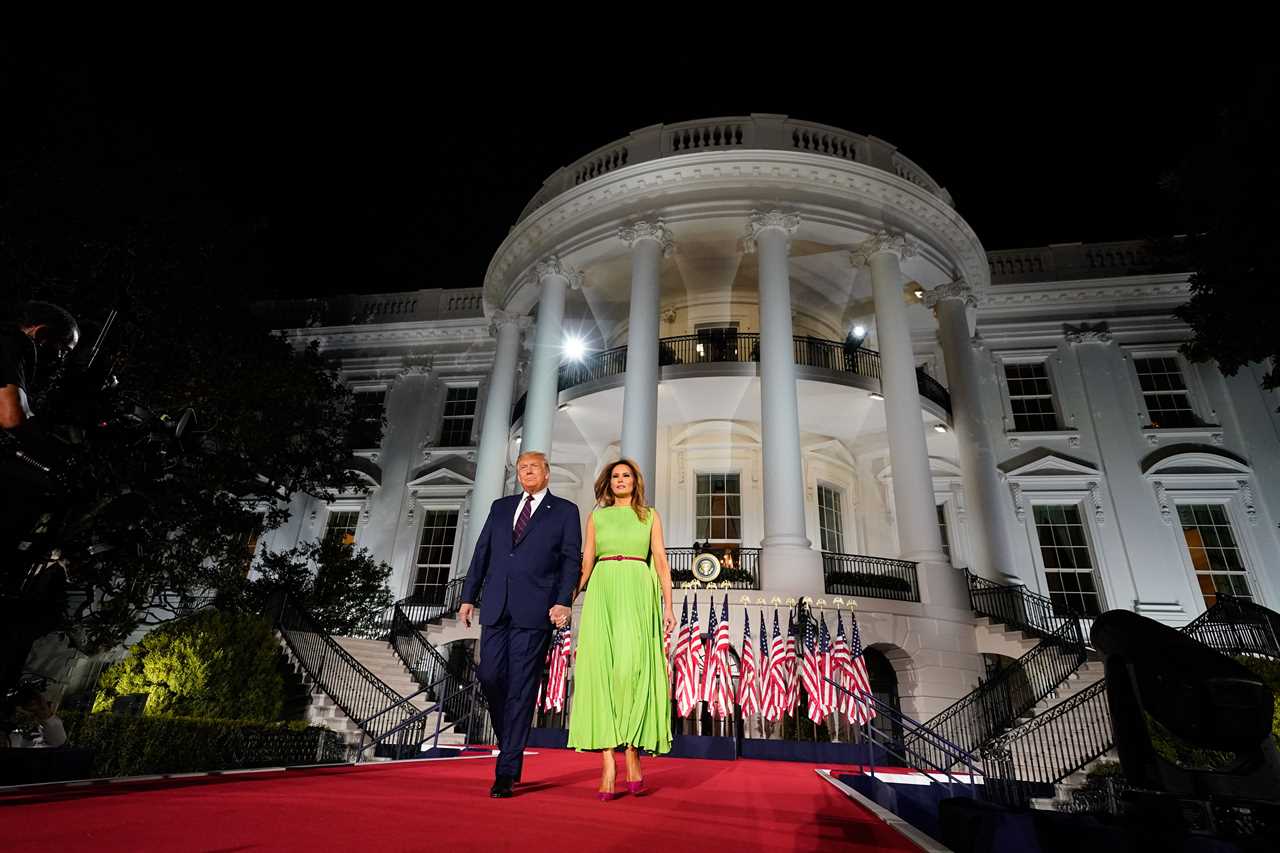
Some engaged in the 2025 project say they intend to move beyond what Vought calls “updated Reaganism” and the “post-1950s National Review fusionism” that supplied the intellectual construct for the conservative movement in the mid-to-late 20th century.
“I love Ronald Reagan. But it’s not the 1980s, it’s 2023. It’s not just a big government we’re up against but a weaponized one,” says Vought, who is now head of the Center for Renewing America — one of some 75 conservative groups, many formed in just the last year or so, that have signed onto Project 2025. Too many executive branch agencies are no longer answerable to the president, he says, and constitutional oversight has morphed over the decades into unconstitutional control by an “imperial Congress.”

If Trump manages to make it back to the White House his first target would almost certainly be the Department of Justice and the FBI, the two agencies he has long viewed as overtly antagonistic to him.
But that’s only a start.
“We think it’s more systematic than it is just about Trump. We have political prisoners in America for the first time I can remember,” Vought says, referring in part to those convicted for their roles in the Jan. 6 assault on the Capitol. “We have people that are in jail that are no threat to their community and no flight risk, that are being mistreated in jail. The court system has adopted a paradigm that they are a threat to democracy.”
As a result, Vought says, “We have to be thinking mechanically about how to take these institutions over.” Vought is reassembling his old team at the Trump OMB and describes his role as drafting fresh executive orders, playbooks and memoranda for cabinet secretaries to be “ready on Day One of the next transition. Whatever is necessary to seize control of the administrative state is really our task.”
‘Experts at killing bureaucracies’
For Trump personally, of course, this is a live-or-die agenda, and Trump campaign officials acknowledge that it aligns well with their own “Agenda 47” program. Trump’s public career has been marked by his ferocious conviction that he has been victimized by one element of the “deep state” or another since the start of his presidency — the Defense Department wouldn’t follow his orders, the FBI tried to undermine him with Russiagate, no one built his wall fast enough and so on. And Trump is in danger of becoming a “political prisoner” himself if he’s convicted of one or more of the 91 criminal counts listed against him in four separate indictments. “Either the deep state destroys America or we destroy the deep state,” the former president declared at his first campaign rally in March.
Dans and others involved in Project 2025 concede that their assault on the “administrative state” is not going to focus on politically delicate entitlements such as Social Security, Medicare and Medicaid, Veterans Administration programs and retirement plans, unemployment compensation and agricultural price support programs — all of which amount to about half the $6.3 trillion federal budget. “That is not going to be on the front burner,” Dans says.
Out on the campaign trail, other leading GOP candidates such as Florida Gov. Ron DeSantis and Vivek Ramaswamy are trying to outdo each other by openly embracing — rhetorically at least — the agenda of taking down a federal government “weaponized” against conservatives. The top target for all of them is the same as Trump’s — the DOJ. Earlier this month, Ramaswamy declared he wants to slash nearly half of the non-defense federal workforce, amounting to a million employees, and to eliminate the Department of Education, the FBI, the Bureau of Alcohol, Tobacco, Firearms and Explosives, the Nuclear Regulatory Commission, the IRS and the Commerce Department. As for DeSantis, his spokesperson Bryan Griffin told POLITICO Magazine that he’s been out ahead on the issue, saying: “Ron DeSantis is the only candidate for president who can break up and rein in the bureaucracy.”

Trump, of course, contends that it’s all his idea: “Everyone knows his America First agenda actually works, which is why many are copying him,” his spokesperson Liz Harrington said in an email. Trump’s Agenda 47 platform includes “a ten-point plan to dismantle the deep state and reclaim our democracy from Washington corruption” and pledges to achieve what he failed to do in his first term by moving up to 100,000 government positions out of the “Washington swamp.”
Dans is somewhat vague when asked about specific efforts to inject Project 2025 into the GOP presidential race. He and others want to avoid getting entangled in the ugly war of words on the Republican campaign trail. But the new conservative coalition has been “in touch with every major candidate” about these plans, says Hoelscher. POLITICO Magazine has learned talks have been ongoing with officials as high as Susie Wiles, Trump’s senior advisor, and David Dewhirst, a top aide to Ron DeSantis (Dewhirst also recently joined the project as a senior consultant). Project 2025 has also reached out to Sen. Joe Manchin (D-W.Va.), who’s been hinting at an independent run, as well. And Dans has set up a legislative outreach committee to garner GOP champions on Capitol Hill, though he admits that “is really in the beginning stages right now.”
Dans says that while the new movement is seeking to ensure the elimination of dissident bureaucrats like Sally Yates, the former acting attorney general who refused to implement Trump’s travel ban on Muslims in 2017; and Alexander Vindman, the former NSC official who in 2019 accused Trump of perfidy over Ukraine, the Covid-19 crisis proved to be the best illustration of the problem of an unaccountable federal “priesthood.”

“The archetype of what we want to end in a bureaucrat is none other than Dr. [Anthony] Fauci,” Dans says. Many conservatives believe that Fauci, the longtime director of the National Institute of Allergy and Infectious Diseases, helped cost Trump a second term by allegedly overreacting to the Covid crisis without taking directions from the president and helping to shut down the economy unnecessarily.
“No bureaucrat should have an action figure made of him,” jokes Dans. “Fauci had 50 years on the job in one of the most technically demanding and ever-changing professions in bio-science. Either the person is a genius on the order of Einstein or is Machiavellian in terms of keeping power. I would submit the latter.”
Vought says his team is also working on a slew of detailed plans on the DOJ in particular that would allow the White House to “defund a lot of functions.” One proposal would require Congress to start with a 25-percent cut in FBI funding to eliminate the bureau’s intelligence capabilities, which have transformed it “from a law enforcement agency to a domestic intelligence agency.” Another proposal would gain White House control of the solicitor general and bring Justice Department attorneys into line with the president’s wishes, as well as allow them to raise legitimate questions about election “fraud” without fear of retribution.
Two key figures involved in Project 2025 were both recently indicted along with Trump in Georgia: former Trump chief of staff Mark Meadows, who’s head of the Conservative Partnership Institute; and Jeffrey Clark, who is working for one of the groups aligned with Dans, the CPI-launched Center for Renewing America. Clark, an environmental lawyer who almost precipitated a mass resignation by Justice Department attorneys in December 2020 when Trump threatened to make him acting attorney general, is seeking to implement Trump’s first-term wish to eliminate any independence by the DOJ. In a paper published in May by the CRA, Clark argued the idea the Justice Department “is or should be independent” is unconstitutional.
Furthering the Trump agenda, CRA is also working on a paper that will take classification decisions out of the hands of deep-state bureaucrats. It is developing other plans to allow a president to halt congressionally mandated funding at his pleasure, as Trump did when he held up foreign aid to Ukraine allegedly to pressure its president, Volodymyr Zelenskyy, to investigate President Joe Biden and his son Hunter, eventually touching off the impeachment crisis.

All such efforts, Vought insists, would respect the principle of checks and balances and restore constitutional order as the Founders intended. “It’s more trying to get back to the Founders’ understanding of the executive branch,” Vought says.
Indeed, the irony of all this — and it’s a bitter, almost unresolvable irony — is that both sides of the political spectrum are now holding up the “Constitution” as the thing they most want to preserve, and yet they remain utterly opposed about how to do it. For Democrats it’s about holding Trump accountable under the Constitution; for Republicans, it’s about taking down the unconstitutional administrative state they believe is after Trump. No negotiations between the two sides are planned.
Many of the key players in this ambitious program openly acknowledge that their efforts were doomed in the first Trump term because they didn’t know what they were doing; it was no contest confronting a Democrat-stuffed “deep state” (as well as all those RINOs Trump brought in), and conservatives have never been good at translating movement ideology into action going back to Reagan and the “triumph of politics.”
Along with Meadows, one of the godfathers of the new conservative insurgency is Dans’ boss, Ralph Waters, president of the Heritage Foundation, which came of age in the Reagan era and is now reinventing itself as the main mouthpiece of Trumpism, overseeing Project 2025.
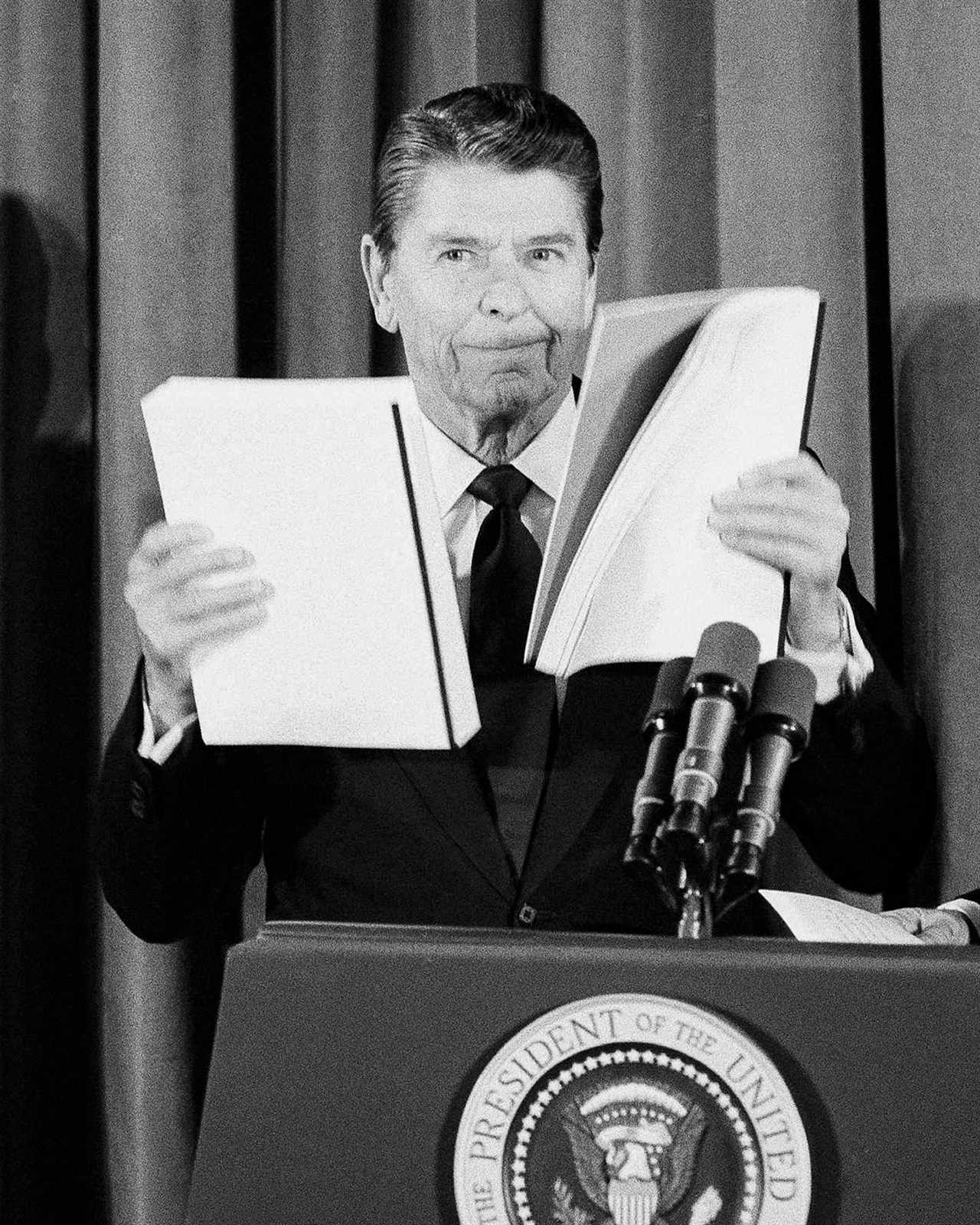
“What we’ve never gotten right in the modern conservative movement, even under Reagan, was having a network of right of center professionals who were ready to go,” says Waters. “To get 10,000 to 20,000 names into this database who are not only submitting their resumes but also being vetted to some extent, and who, depending upon the classification of the position we think they’re suitable for, are going through these training modules — that’s the part that’s never been done before.
“Do we have conservatives who are experts at killing bureaucracies?” Waters says. “No. The conservative movement has not developed this capability. But we’re going to as a result of Project 2025.”
‘Republicans still don’t like the idea of expertise’
Little of the Project 2025 agenda is likely — even remotely likely — to happen, of course.
In recent decades, a few small agencies have been privatized, some powers ceded to states and localities. But the growth of the federal bureaucracy generally goes in one direction, history teaches, as demonstrated over the decades by the GOP’s spasmodic efforts to eliminate the Department of Education — now viewed as the evil font of “wokeism” — which Reagan declared on the 1980 campaign trail to be a “bureaucratic boondoggle.”
Moreover, while the orneriness of the Pentagon and military leadership were a problem for Trump — and a particular target of the new agenda — the Trumpists also want to be hawkish on China. And that’s going to present a huge problem if they want to bring the military-industrial complex — which everyone involved in Project 2025 agrees is the most out of control — into line with White House wishes.
One of the few generals who hasn’t abandoned Trump — and works for the America First Policy Institute — is retired Army Lt. Gen. Keith Kellogg, who complains in an interview that Biden is going too easy on Chinese President Xi Jinping. “Eventually we’re going to have to draw the bright line. And this administration hasn’t drawn it yet,” Kellogg says. His proposal is to resurrect something like NSC-68, the founding strategy for the Cold War adopted under Harry Truman in 1950. “Give me an NSC-68 for China,” Kellogg says. The problem: NSC-68 created the modern national security state — and a new one will almost certainly make the Pentagon and defense industrial complex even more unwieldy since external threats tend to enlarge the national security apparatus. Just look at the Department of Homeland Security. And recall that Reaganite attempts to dismantle the Department of Education were abandoned after its 1983 report, A Nation at Risk, suggested that the U.S. could lose the Cold War in the classroom.
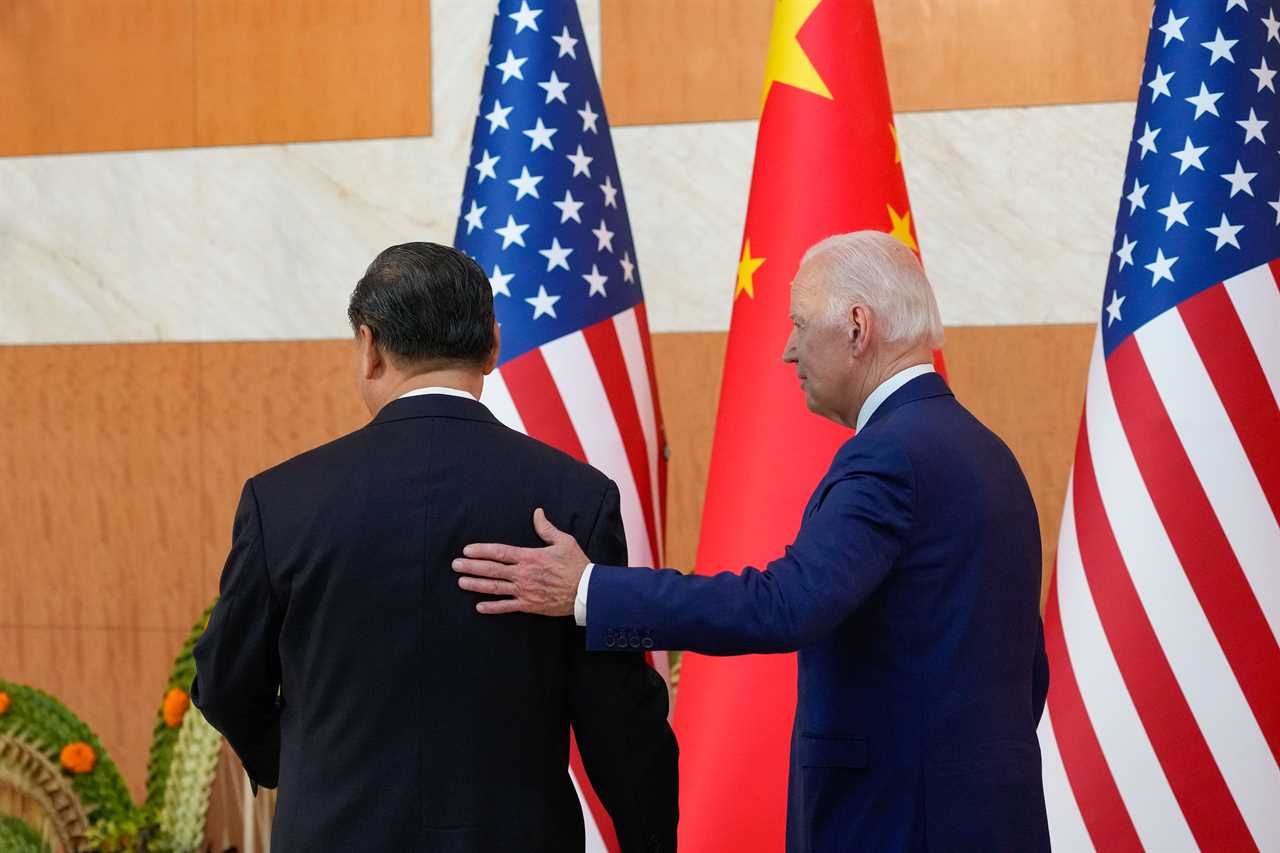
Moreover it strains credulity to describe Congress as“imperial” when in so many respects, critics say, Congress has actually neglected its duties or kicked them over to the White House — avoiding such as issues as new Authorizations for the Use of Military Use (AUMF), for example.
Some conservative scholars and government experts say that Project 2025’s grand plans to transform the federal bureaucracy are often comically naive. Not only are they unworkable, critics contend, but if they’re implemented they will likely only render the federal government even more incompetent than conservatives now say it is. And certainly more chaotic and amateurish than in Trump’s first term.
“What it totally reminds me of is the Iraq occupation: 21-year-old kids who just came out of Patrick Henry College running a country into the ground,” said Geoffrey Kabaservice, author of Rule and Ruin: The Downfall of Moderation and the Destruction of the Republican Party, “That sounds like their vision for America.”
Kabaservice, a conservative himself who works for the libertarian-oriented Niskanen Center, concedes many of the Project 2025 plans for reform are “legitimate.” One chapter of the new Mandate for Leadership, co-authored by Dans, Donald Devine and Dennis Dean Kirk, sounds anodyne enough. It calls for a better examination-based hiring system, pay for strong performers along with cuts in what they see as a too-generous pension system, and easier ways of dismissing poor performers. But “Schedule F,” Kabaservice says, is nothing less than “an attempt to eviscerate government and replace it with Trump stooges.”
In many ways, the notion that one can replace decades of on-the-ground experience — say in running a health care bureaucracy or policing the border — through a video training program is very Trumpian. Who better to hire legions of unctuous but untried newbies, after all, than the man who declared, “I alone can fix it,” and who routinely used to say — whether the subject was Covid-19 or nuclear weapons — that he knew more than the scientists and generals.
The deeper problem, Kabaservice says, is that “Republicans still don’t like the idea of expertise. They actually seem to believe all you need to know about running a country that underpins the global order is something you can know by being a mom.”
Dans dismisses these criticisms by recalling William F. Buckley’s famous quip: “I’d rather entrust the government of the United States to the first 400 people listed in the Boston telephone directory than to the faculty of Harvard University.”
“I would trust a mom coming back into the workforce who had just successfully raised four kids to be able to manage an agency,” says Dans. “We have a lot of faith in our common man. We are the party of the forgotten man, the citizen farmer, the folk who really make this country run. I think a lot of it is intuitive, respectfully. We live in a modern society where an entire class of managers have managed to insert themselves and make it increasingly complex and intermediate all these points to the extent where no one actually understands the functioning.”

Kevin Kosar, a scholar at the conservative American Enterprise Institute, has also argued that conservatives need to create a pipeline of people good at governing. But he says they’ve had so little experience at legislating in the post-New Deal era — with minor interludes of power such as the mid-80s and ’94 Newt Gingrich takeover of the House — that they don’t really know how to accomplish government reduction. He says the biggest problem with this grandiose new agenda is just how murky it really is, not to mention its end goal. “It’s entirely up for grabs. What if they get the White House? OK, boom. They get Schedule F. Boom. Does that mean we no longer have a weaponized government? Is it fine now?”
The Trumpers involved in Project 2025 say they realize they can’t replace everybody — and they don’t want to. Vought says he wants “career number crunchers” at OMB who possess “the continuity of expertise” to stay on — only to add more political appointees to keep them in line.
But the project’s authors are the first to admit that implementing most of it will require enormous political power that they do not currently have. “Yes, this is daunting, there is no doubt about it,” says Waters. “It requires not just a plan and it doesn’t just require the personnel. This requires controlling not just the White House but both chambers of Congress.”
Dans pooh-poohs such concerns and says he’s focused on the long term. “This is all about bringing newcomers to Washington. This land is your land, this federal government is your federal government. It’s not just the sole province of people in the metro D.C. area,” he says. “I believe that within 350 million Americans we can find conservative warriors who are at the top of their game.”
‘I know the good ones. I know the bad ones.’
But can they? For people who have focused mainly on the headlines in the last few years — currently dominated by Trump’s fourth indictment and the nasty repartee on the GOP campaign trail — it may look like a second-term President Trump would have some difficulty implementing such plans. Certainly, he might have trouble finding experienced, nationally known people to stock his Cabinet.
After all, since the end of Trump’s last term and especially the Jan. 6, 2021 uprising, a parade of high-level former officials — starting, of course, with his vice president, Mike Pence who is now an opponent in the primary — have vociferously broken with him. These include the most senior members of his cabinet — his former attorney general, secretary of state, U.N. ambassador (another current opponent) and several ex-defense secretaries and national security advisers. Trump’s former chief of staff, John Kelly, has called him “the most flawed person I have ever met in my life.” As his criminal trials at the federal, state and local levels move forward — especially in the Georgia case with its 18 co-defendants — more former acolytes may be “flipped” to turn against him.
But a large phalanx of loyal Trumpists remains in Washington — most of them scattered in conservative action groups on Capitol Hill and Pennsylvania Avenue — and few of them seem to care whether Trump runs as a convicted felon or not. Among them are the directors of the AFPI, sometimes described as a Trump “cabinet in waiting”: Larry Kudlow, the former chair of CEA; Rick Perry, Trump’s secretary of energy; Chad Wolf, former acting DHS secretary and former Louisiana Gov. Bobby Jindal, who heads the Center for a Healthy America at AFPI; Kellogg, who could run the Pentagon (another possibility is Chris Miller, Trump’s last acting defense secretary); and U.S. Trade Representative Robert Lighthizer, who implemented Trump’s neo-protectionist policies and writes in his new book, No Trade Is Free, that Trump will go down as “a great president, truly one of the greatest.”
Others who would likely be in line for senior jobs are Vought, former national security adviser Robert O’Brien and Stephen Miller, Trump’s immigration pit bull, who has formed yet another aligned group under CPI, America First Legal, that is challenging nearly every Biden executive order in court. A second-term Trump also could bring in his many loyalists on Capitol Hill, like Rep. Jim Jordan (R-Ohio), chair of the House Judiciary Committee.
One former Trump official, Troup Hemenway, said all the disaffections from Trump have made things easier. “Folks actively opposed have kind of revealed themselves and they’re not going to be invited back,” he said.
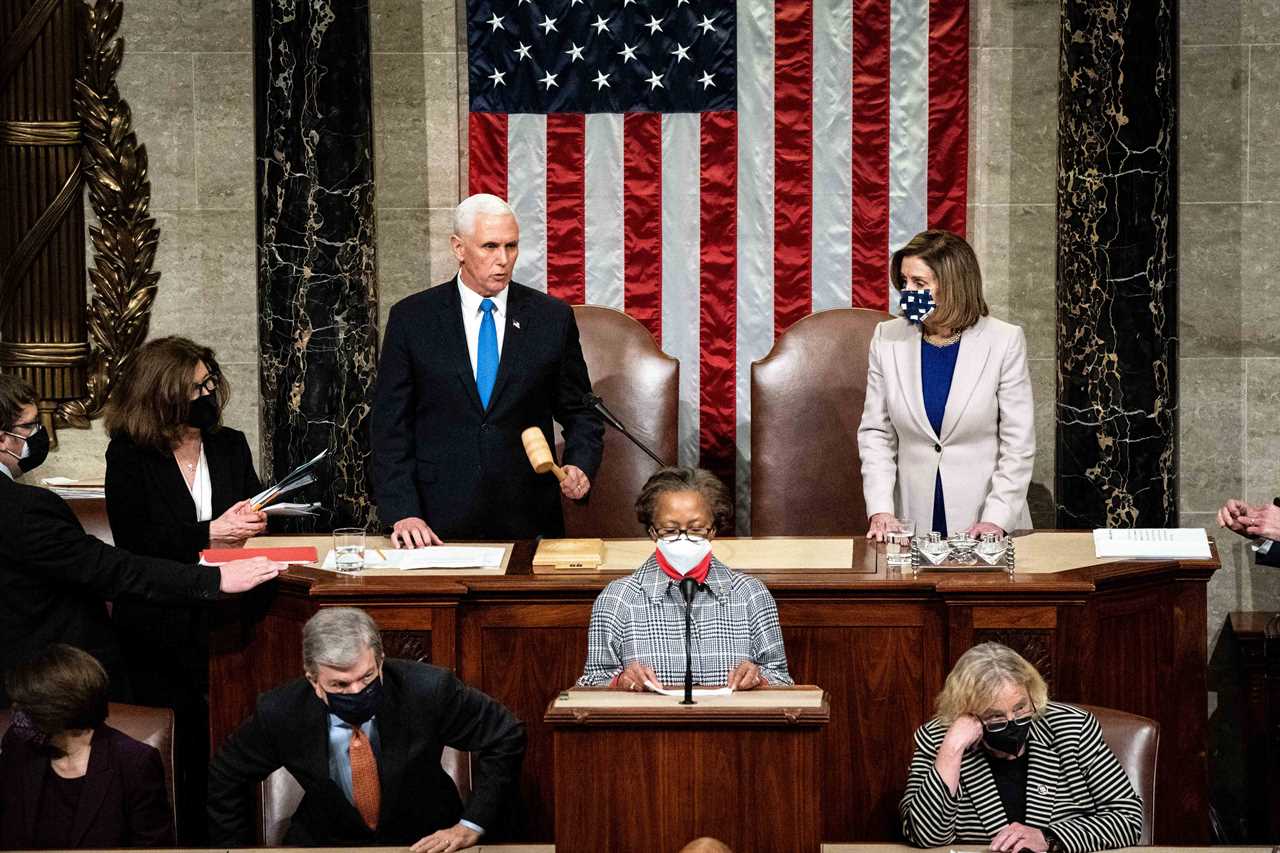
The candidate himself, speaking in Iowa in March, seemed to agree. “When I went there [to the White House], I didn’t know a lot of people; I had to rely on, in some cases, RINOs and others to give me some recommendations, but I know them all now,” Trump said, referring to “Republicans in Name Only.” “I know the good ones. I know the bad ones. I know the weak ones. I know the strong ones.”
Perhaps. But the biggest mystery — and challenge — will be determining who the new loyalists will be. For the America First Policy Institute, which is helping to implement Project 2025, its grandest ambitions lie in soliciting governors and state attorneys general to the cause, among others. AFPI will soon launch America First “state chapters.” Adds Rollins, AFPI’s CEO: “What AFPI is building is very much an outside of Washington D.C. approach. There is so much talent and so many really incredible people currently in college or in the private sector who would love to come in.”
Another challenge will be training and vetting the right people to do what conservatives have traditionally hated to do — deploy the power of the federal government — without themselves becoming the new enemy. “That’s the most expensive part,” says Waters. “It’s probably 75 percent of the costs of this project — building the conservative ‘Linked In’ as we like to call it. There is vehement agreement that this is the most important part of the project.”
‘A furious reaction against elites of all stripes’
However that plays out, it is hardly an accident that so much public outrage exists against Washington elites, that Project 2025 has leapt to embrace it, and that Trump has so effectively exploited it over the past six years. Indeed, if one sets aside the outrages committed by Trump — and a lot of the other craziness now possessing the GOP — Project 2025 very likely has a substantial political base. One that isn’t going away.
Why? For the last several decades both political parties have offered up lesson after lesson in misdirection: from the folly of deregulating markets and skewing taxes to favor multinational companies and capital gains-earners at the expense of the working class to launching one of the least-justified and costliest wars in modern history in Iraq, one that had a disproportionate effect on working class families who make up the bulk of the armed forces. This created deep anger and resentment over the crushingly unequal society the United States has become, feeding populism not only on the right but the left as well. (Recall how the once obscure socialist Sen. Bernie Sanders (I-Vt.) nearly defeated Hillary Clinton in the 2016 Democratic primaries on the strength of his own populist agenda.)
In his new book, Lighthizer even makes a point of thanking labor leaders and Lori Wallach — perhaps the most respected trade expert in the progressive movement — as “a longtime friend and co-conspirator who was a constant advisor and liaison with many on [Capitol] Hill.” The rage against Washington also extends to Trump’s last Defense chief, Chris Miller, a career special forces soldier who views, like most of the new Trumpian right, the Iraq invasion as a monumental disaster based on lies and “wants to fire most of the generals at the Pentagon, slash defense spending by half, shut down the military academies, break up the military-industrial complex,” according to an intimate profile of Miller by Peter Maass published in March.
As a result, the intellectual conservatism of Buckley and other conservative thinkers has been transmuted into its virtual opposite, and the Project 2025 team has embraced it. As Matthew Continetti writes in his 2022 book The Right: The Hundred-Year War for American Conservatism","link":{"target":"NEW","attributes":[],"url":"https://www.basicbooks.com/titles/matthew-continetti/the-right/9781541600522/","_id":"0000018a-acdd-d7bb-a18a-eedf22aa0000","_type":"33ac701a-72c1-316a-a3a5-13918cf384df"},"_id":"0000018a-acdd-d7bb-a18a-eedf22aa0001","_type":"02ec1f82-5e56-3b8c-af6e-6fc7c8772266"}">The Right: The Hundred-Year War for American Conservatism: “What began as an elite-driven defense of the classical liberal principles enshrined in the Declaration of Independence and Constitution of the United States ended up, in the first quarter of the 21st century, as a furious reaction against elites of all stripes.”

Some critics believe this is all rhetorical window dressing for what would be, in a second Trump term, four years of personal vengeance at any cost. Kabaservice says the new concept of “national conservatism” embraced by the Project 2025 crowd — code for Trump’s odd, ungainly blend of neo-protectionism, neo-isolationism and Reaganite trickle-down economics — is merely an “attempt to intellectually retrofit a rationale for Trumpism.”
But it would be a mistake to think that even if Trump somehow goes away — either into retirement or into prison — Republicanism will change with him gone. That’s because Trump’s success in merging the conservative movement with his political persona is really an extension of the mistrust of elites in Washington, and that sentiment won’t subside any time soon. As Continetti writes: “Untangling the Republican Party and conservative movement from Donald Trump won’t be easy.”
The new right, and now national conservatives, are in “a condition of fracture and flux” and it has become hard to tell any longer who belongs on the Right and who doesn’t, Continetti says.
Now Trump’s acolytes are filling the vacuum. But it is possible that, as happened in Trump’s first term, the new conservative revolution will eventually eat its own. After all, starting with the saga of Jeff Sessions — the ultra-conservative senator who was one of the earliest Trump backers and then found himself ousted as attorney general — the Trump administration was characterized by loyalists who were never loyal enough for him.
One present and growing danger, Vought concedes, is that “an uncomfortable number of former Trump folks” aligned themselves with DeSantis, beginning last fall before the Florida governor’s campaign began to tank. Some like Vought say they are worried that too many former Trump devotees are removing themselves for consideration for positions in a second term.
Dans says this new Republican revolution is trying hard to “learn from the mistakes” of the old one — which is one reason the Project 2025 team is, like Reagan, avoiding threatening people’s entitlements. But it is also true that if they succeed with even a small part of their ambitions, Reagan could end up looking like a milquetoast middle-of-the-roader left behind on the ash heap of history.
----------------------------------------
By: Michael Hirsh
Title: Conservatives Want to Use Trump 2.0 to Decimate the Deep State. History Says Not So Fast.
Sourced From: www.politico.com/news/magazine/2023/09/19/project-2025-trump-reagan-00115811
Published Date: Tue, 19 Sep 2023 04:00:00 EST






